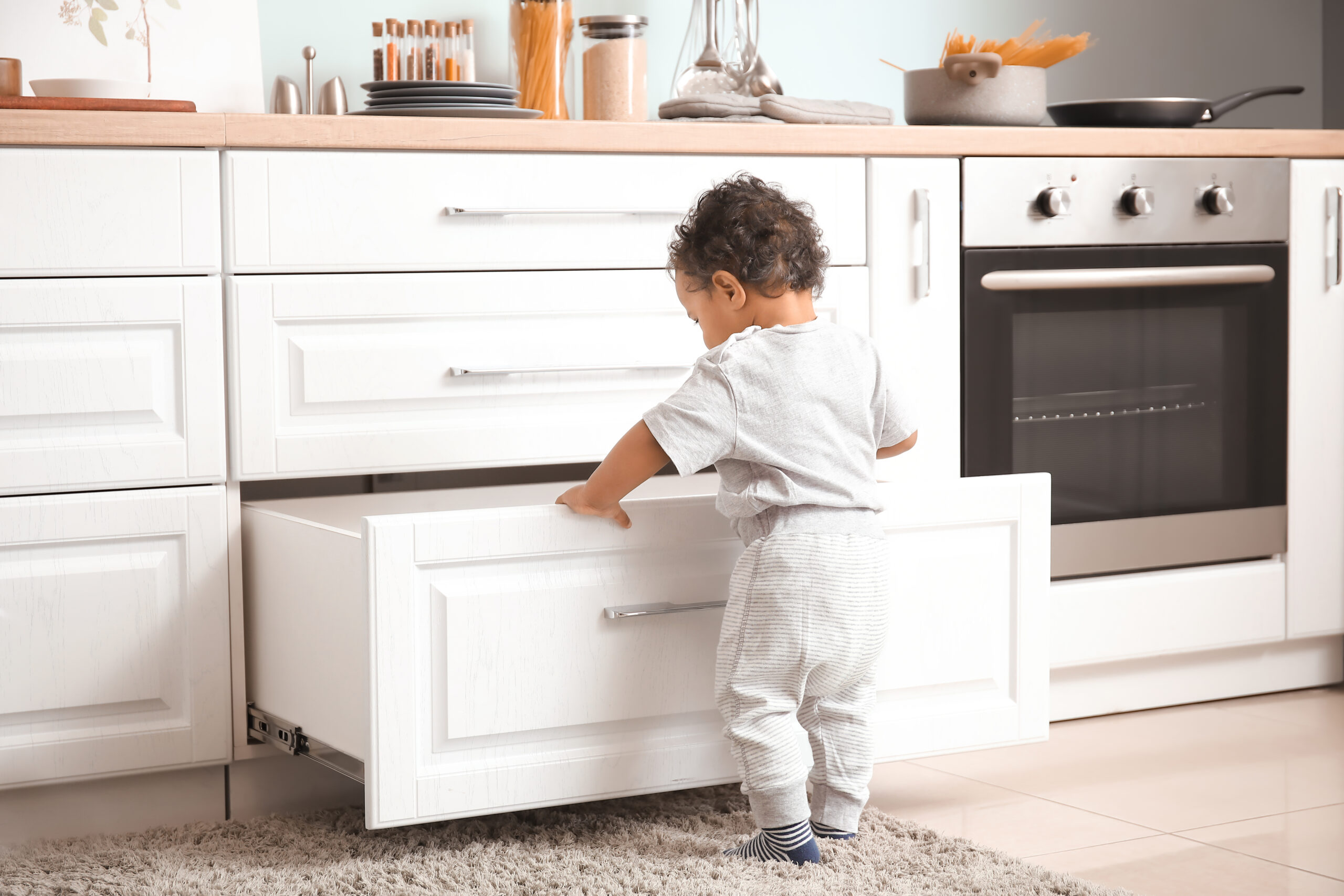As children grow, their curiosity leads them to explore their surroundings, which can sometimes result in dangerous situations. Did you know that the cords on window shades are a choking risk for infants? Did you know that 5-year-olds can get to window openings despite moving furniture away and open a locked window? Once there, the normal light window screens pop out with a child’s push, and because a child’s head is heavy compared to their body size and weight, their head will pull them through the opening. Childproofing your home involves not underestimating your children’s abilities when identifying potential hazards. Then, take proactive measures to prevent serious injuries.
Identifying Common Hazards
Common hazards are choking, poisoning, falling, drowning and electrical dangers. Small objects like coins, buttons, batteries and objects on toys pose choking risks, while household chemicals, medications and certain plants can be poisonous if ingested. Staircases, windows and furniture that children can climb present falling risks, while bathtubs, pools and even buckets of water are potential drowning hazards. Lastly, electrical outlets, cords and appliances pose the risk of electric shock.
Securing Furniture and Appliances
Anchor large bookshelves, dressers and televisions to the wall to prevent tipping over. Appliances like toaster ovens and microwaves should be out of children’s reach or have safety locks. Additionally, avoid placing tempting objects like toys or remote controls on top of heavy furniture, which might encourage climbing.
Installing Safety Gates and Guards
Safety gates are essential for blocking access to dangerous areas such as staircases, kitchens and bathrooms. Install gates at both the top and bottom of the stairs. Additionally, window fall protection devices can prevent children from falling out of windows. Note that window opening control devices (WOCDs) often fail, so use a bar system or safety screens that will not pop out.
Locking Away Hazardous Substances
Store household chemicals, medications and cleaning supplies out of sight in locked cabinets. Use child-resistant locks on cabinets and drawers. Educate older children about the dangers of these substances and the importance of not tampering with the locks.
Preventing Electrical Hazards
Cover electrical outlets with outlet protectors that are not easily removable by children. Keep electrical cords out of reach and secure to the wall where possible. Avoid using extension cords and power strips in areas accessible to children. For appliances, use safety latches to prevent children from turning them on or pulling them down.
Drowning Prevention
Drowning is a leading cause of accidental death in young children, making it crucial to secure all water sources. Never leave a child unattended in the bathtub, and always empty water from tubs, buckets and containers immediately after use. If you have a pool, ensure you surround it with a fence with a self-closing, self-latching gate. Pool alarms and safety covers add additional layers of protection.
Fall Prevention
Use non-slip mats and secure rugs and carpets. Install safety rails where necessary. Make sure that cribs and playpens meet safety standards and that their sides are high enough to prevent children from climbing out. Repair or discard wobbly furniture.
Safe Play Areas
Designate safe play areas within your home where children can explore without encountering hazards. Use soft flooring materials like foam mats to cushion falls and remove any sharp or breakable objects. Ensure that toys are age-appropriate and free from small parts that could pose choking hazards. Regularly inspect toys for wear and tear and discard damaged ones.
Educating Caregivers and Family Members
Educate caregivers, babysitters and family members about safety measures and ensure they follow them consistently. Create a checklist of safety precautions and review it regularly to account for any changes in your child’s environment or behavior.
Staying Informed
Childproofing guidelines and recommendations can change, so it is essential to stay informed about the latest safety standards. Organizations like the American Academy of Pediatrics (AAP) and the Consumer Product Safety Commission (CPSC) provide up-to-date information on child safety. Regularly review their websites and resources to ensure your home remains a safe environment for your children.
Conclusion
Remember, childproofing is an ongoing process that evolves as your child grows, requiring constant vigilance and adaptation.








Leave A Comment